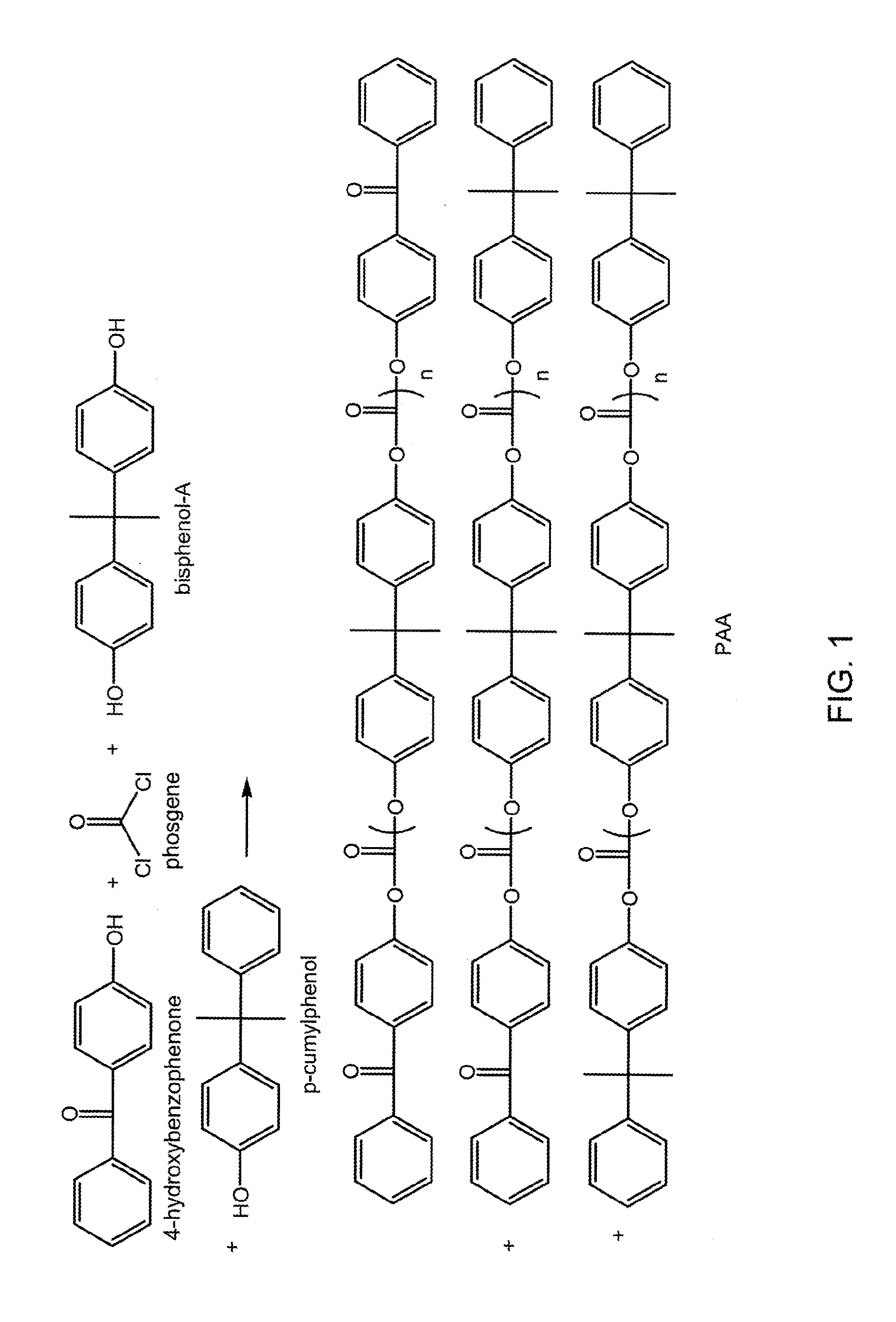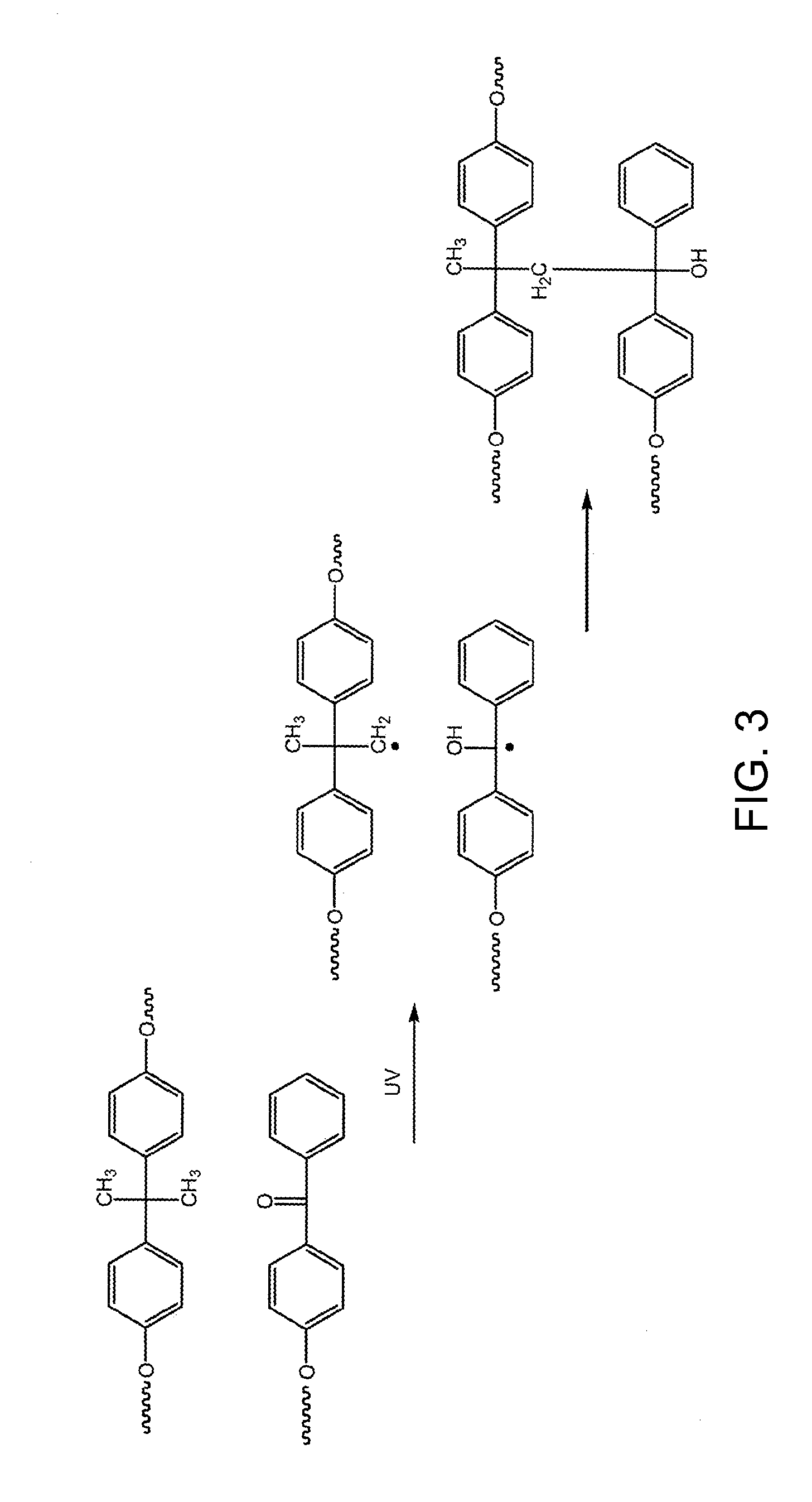Polycarbonate fibers and substrates comprising same
a technology of polycarbonate fibers and substrates, applied in the field of polycarbonate fibers, can solve problems such as behavior worsening
- Summary
- Abstract
- Description
- Claims
- Application Information
AI Technical Summary
Benefits of technology
Problems solved by technology
Method used
Image
Examples
example 1
[0141]Fibers were made from an XPC-D polymer which was a bisphenol-A polymer with 4-hydroxybenzophenone endcaps present in an amount of 2.5 mole %, with no p-cumylphenol endcap, and having an Mw of 22,000. The XPC-D was blended with 0.06 phr phosphite stabilizer. This polymeric composition had an MVR (300° C. / 1.2 kg, 360 sec dwell) of 8.5 cc / 10 min.
[0142]A Fiberlab L1000 device (from FibeRio Technology Corporation, McAllen, Tex.) was used to form fibers. 10 wt % of the composition was dissolved in methylene chloride to form a solution, which was placed in a liquid reservoir. This liquid reservoir was spun on a vertical axis, pushing the liquid state material to the outer wall where orifices were present. The centrifugal and hydrostatic forces initiate a liquid jet, and external shear forces promote cooling and solvent evaporation, creating the fiber.
[0143]Two sets of fibers were made. The first set (Sample 1) was made at 12,000 rpm and an orifice diameter of 159 micrometers. The res...
example 2
[0147]50 wt % of the fibers of Example 1 are combined with 50 wt % of cellulose fibers and exposed to a high temperature to cause melting of the polycarbonate fibers and form a paper sheet. The paper sheet is exposed to UV radiation to cause crosslinking of the polycarbonate fibers.
example 3
[0148]50 wt % of the fibers of Example 1 are blended with 50 wt % of polyimide fibers. The blended mixture of fibers is then extruded to form a paper sheet. The paper sheet is exposed to UV radiation to cause crosslinking of the polycarbonate fibers.
PUM
| Property | Measurement | Unit |
|---|---|---|
| Temperature | aaaaa | aaaaa |
| Fraction | aaaaa | aaaaa |
| Diameter | aaaaa | aaaaa |
Abstract
Description
Claims
Application Information
 Login to View More
Login to View More - R&D
- Intellectual Property
- Life Sciences
- Materials
- Tech Scout
- Unparalleled Data Quality
- Higher Quality Content
- 60% Fewer Hallucinations
Browse by: Latest US Patents, China's latest patents, Technical Efficacy Thesaurus, Application Domain, Technology Topic, Popular Technical Reports.
© 2025 PatSnap. All rights reserved.Legal|Privacy policy|Modern Slavery Act Transparency Statement|Sitemap|About US| Contact US: help@patsnap.com



